Vinyl Reincarnation: Reflections on a Paradoxical Trend
The stable dynamics of sales of new vinyl players, the interest of producers, the unceasing excitement of music lovers who buy records, makes you wonder. Usually, the spontaneous trends of fashion do not drag on for decades, which cannot be said about what is today called the new vinyl boom. This post is a reflection on how the long-lived vinyl trend appeared, who needs it and why, and also when it ends.
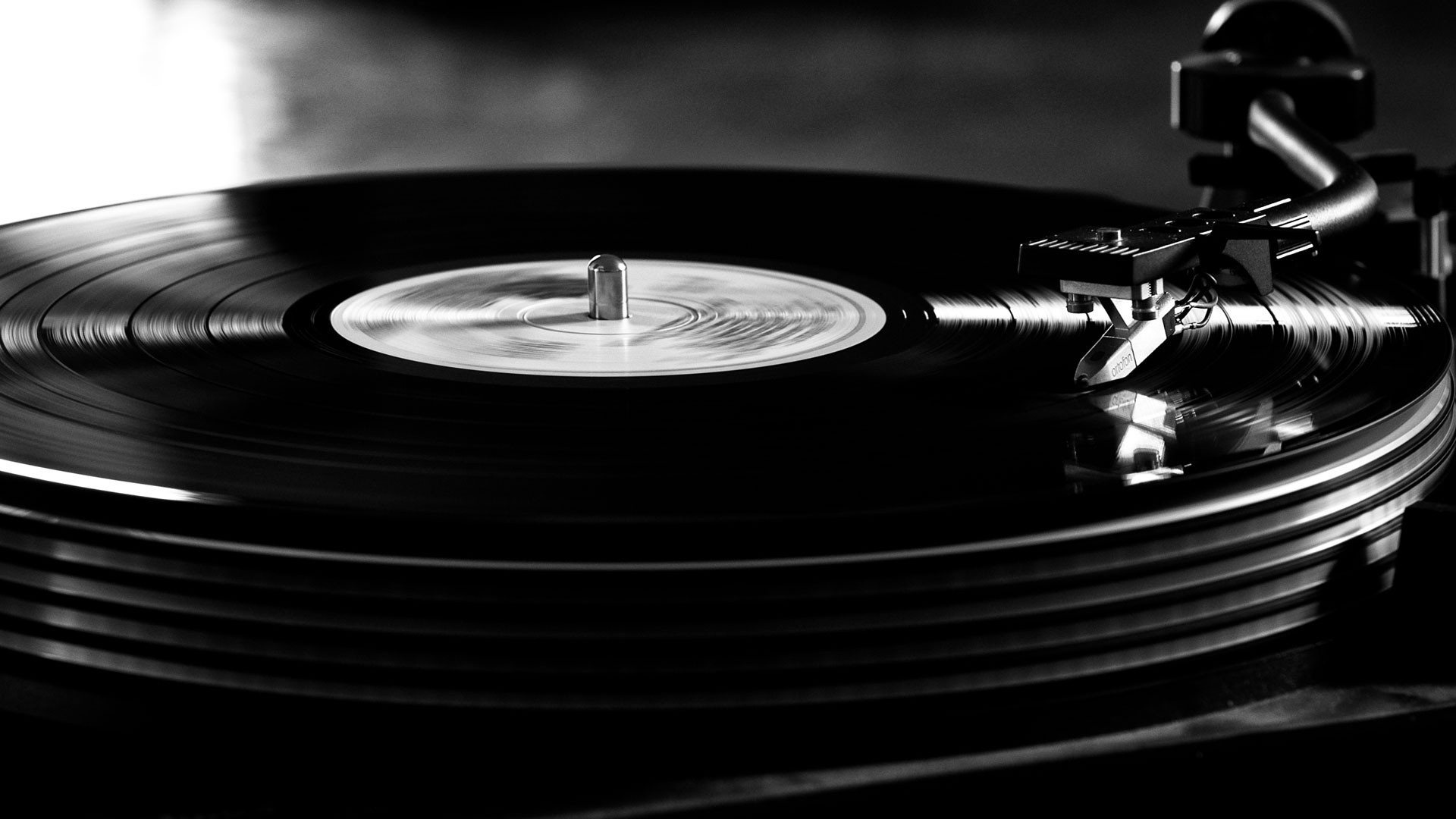
Immediately, I note that my little inner “esthete / music lover / audiophile” always indifferent to vinyl, but not because of its “uniquely wonderful”, “lively”, “inspired” sound, but due to the subjective attachment to fascinating “magic »Electromechanical playback process. I perceive my weakness with due self-irony and in no way impose on anyone.
')
In my early youth, when vinyl had not yet experienced a rebirth, I liked to think that this rare (almost unique) hobby makes me stand out from the gray mass. But quite a bit of time passed, I stopped thinking so much about personal uniqueness, and every second bearded character in rectangular glasses had a player, and an impressive collection of “black gold music lovers”.
As many remember, by the end of the 80s - the beginning of the 90s, the format war ended with the complete defeat of vinyl and the temporary tape cassettes taking over the market Olympus, and in the premium segment almost from the moment of their appearance in mountain loneliness CD dominated. Subsequently, digital formats in Europe, the USA, Japan and China, and later in Russia, began to rapidly replace tape cassettes. At the beginning of zero, magnetic tape lived out the last days. Vinyl throughout the 90s - the beginning of the zero occupied only two modest niches: a carrier for DJs and a collectible.
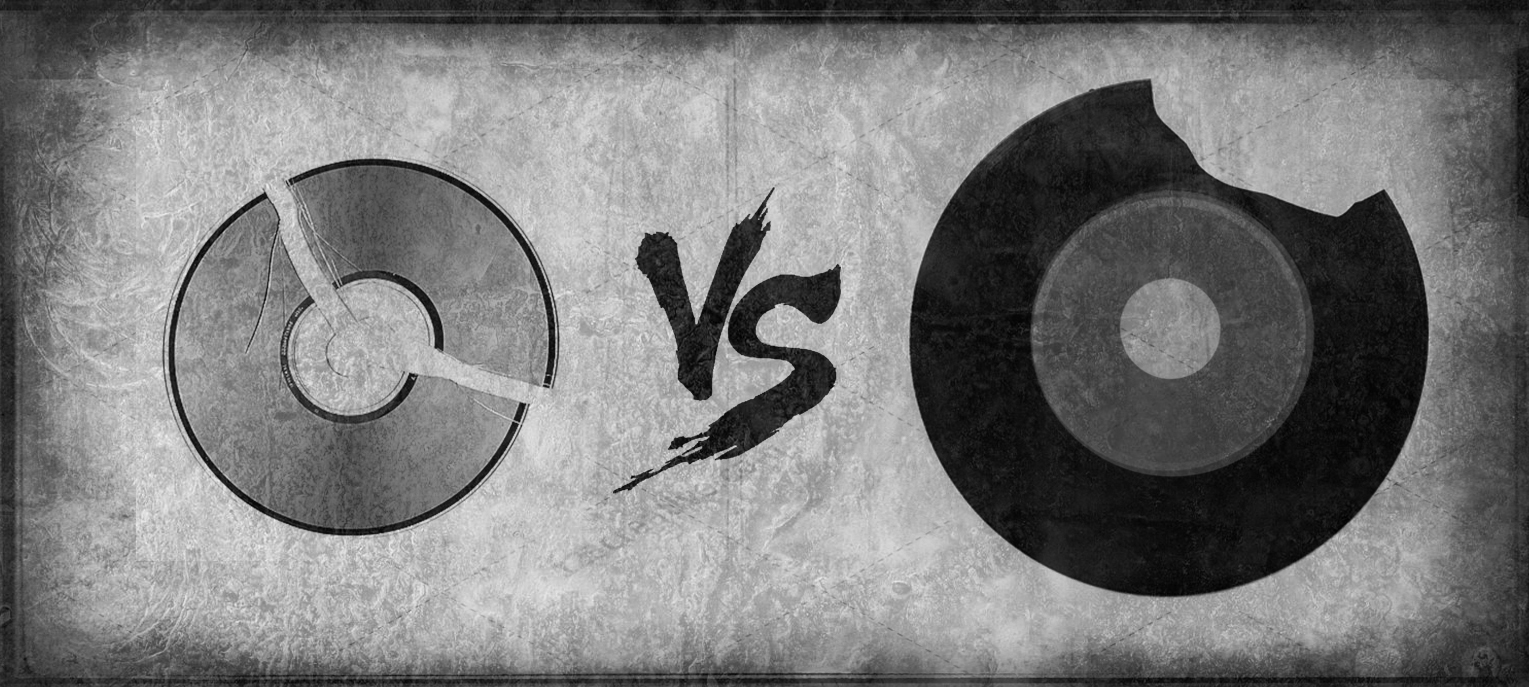
The reasons for the decline of the vinyl era were weight. Records on the records abounded with biting-detonating artifacts, their cost was comparable to a CD, the listening equipment was also not cheap and required appropriate maintenance, and in addition, the records were extremely inconvenient for pirated copying. Last, I think, played a special role in the fate of the format in the post-Soviet expanses. I still remember how in childhood, during games on the street, a record with speeches of L.I. Brezhnev was used as a humane alternative to projectiles, boomerangs, etc., and in the school they used to make flower pots in a straightforward way.

The wide distribution of MP3 and Losles formats, it would seem, should have put an end to many years of controversy, but this was not the case. Suddenly, like a dash from a snuff box, like a bolt from the clear, cloudless sky, an inexplicable interest in vinyl arises. And there is almost no reason, as if from scratch.
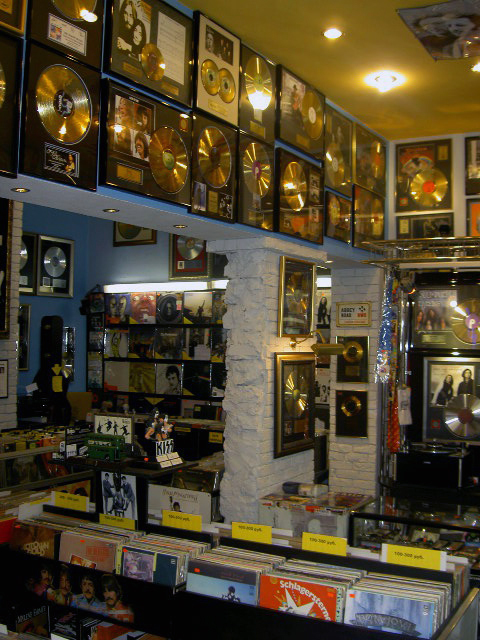
From the end of the zero to the beginning of the tenths, several old record-making enterprises are launched at once, the range of manufacturers producing players expands dramatically, the neophyte ranks of the vinyl idol grow like yeast dough. In parallel with these processes, vinyl begins to increasingly appear in Hollywood cinema, there is a huge amount of marketing publications for audiophile-minded audiences with stories about the "liveliness" and "high-spiritedness" of vinyl sound and that, in general, is TRUE.
In my opinion, there are several reasons for the “renaissance”. I am not a supporter of conspiracy theories, but it is worth noting that in many ways a wave of interest was rising artificially and with considerable investments. Hence the question: who can invest in the public relations of outdated technology and why.
Beneficiaries
Oddly enough, it is beneficial to almost everyone. Beneficial to record producers, as they were able to revive archaic production. It is profitable for publishers, since they will be able to raise profits at the expense of licensed products, and accordingly, it will be beneficial for music creators, as publishers will have the opportunity to increase royalty. It is beneficial for manufacturers of equipment, since the technology of creating equipment for playing records has been worked out for decades and no astronomical investments in new developments are needed, it is enough to update the design, element base and launch the components into a series. It is beneficial for those who are engaged in advertising and promotion, since the creation of public opinion on a global scale requires an impressive investment.
Consumers vs Marketer
The needs of producers, publishers and performers are one thing, but the consumer will be more difficult to perceive the product without experiencing at least the minimum need for it. I am convinced that there are several psychological “hooks” that marketers catch vinyl neophytes, among them not least occupy: nostalgia, value, aesthetics and ritualization of the process.
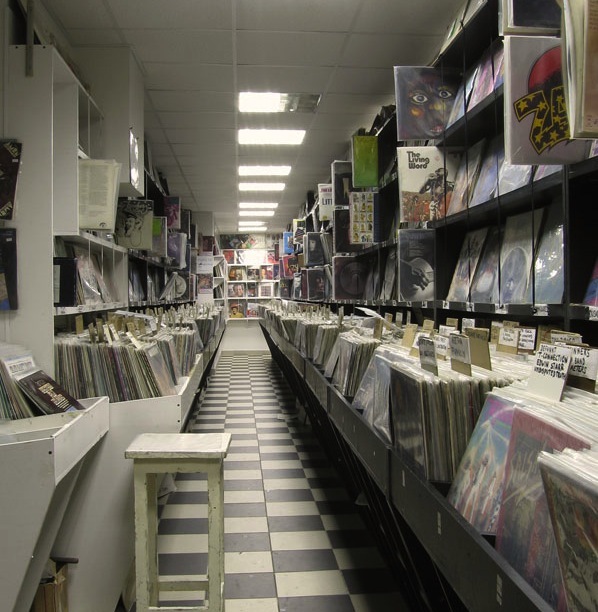
Hook number 1 - nostalgia. Many may argue that the “vinyl” audience is often the people who do not remember the era of “players and records” and cannot experience true nostalgia. But it is no secret that it is even easier to form nostalgia for the time in which you did not live. This phenomenon is akin to the popularity of historical reconstruction clubs. Not infrequently, a person, learning something about the past, begins to believe that he was not created for the time in which he lives, and that in the past he could have achieved more. There is something very similar.

Given the lability of beliefs in young people, the formation of nostalgia, for example, by the 60th: the time of the sexual revolution in the USA, the beatlemania and the heyday of the vinyl business, is a realizable task. Some popular subcultures, almost completely borrow them both aesthetics and values of the 60s - 70s, and as a result they are in the focus of vinyl marketing.
Hook number 2 - value. And it is deeper than nostalgic bindings. In my opinion, the availability of musical works, their almost complete free of charge, psychologically reduced the subjective value to the consumer. At the level of sensations, it will be understandable to people who remember the times in which any collection album needed to be searched, waited, reached. The attitude both to the music and to the bearer during the period of comparative deficit was different.
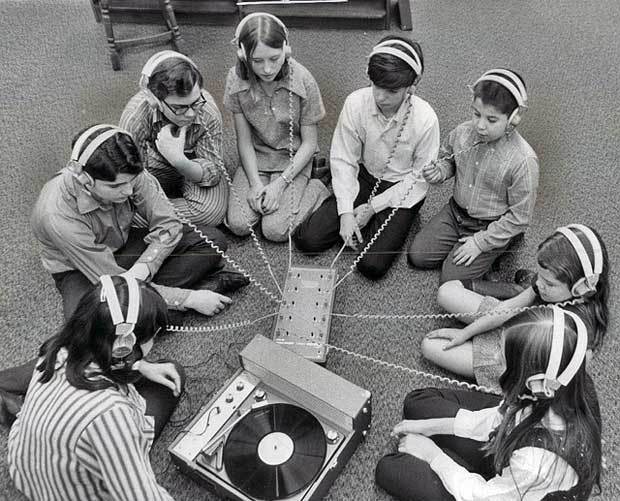
To paraphrase, some people are accustomed to the fact that value is that which is inaccessible, and something available value automatically loses. And yet, it is easier for most people to perceive as something meaningful precisely an object, rather than information. By the way, the situation is changing, but slowly and for the majority the subject is more valuable than information. The return of the vinyl automatically added to the problems so necessary for people attached to the material. You need to buy a turntable, disks, you can, overcoming difficulties, create a collection. Disks can be held in contrast to files whose carrier is a “faceless” USB flash drive or hard disk.
Hook number 3 - aesthetics. The possibilities of the aesthetic, conceptual design of the album in the case of the disc are much higher: large envelopes, printing, booklets, cases in the case of expensive collection editions. It works as a souvenir, but you can also listen. A separate situation with the equipment, it is difficult to imagine audio equipment, so different in design. Any options. Exposure of parts of the mechanism, glass and stone cases, platinum tonearms, plastic, wood, steel, vintage, futurism, high-tech, minimalism, modern, in short everything that pleases the soul and, perhaps, even beyond that.
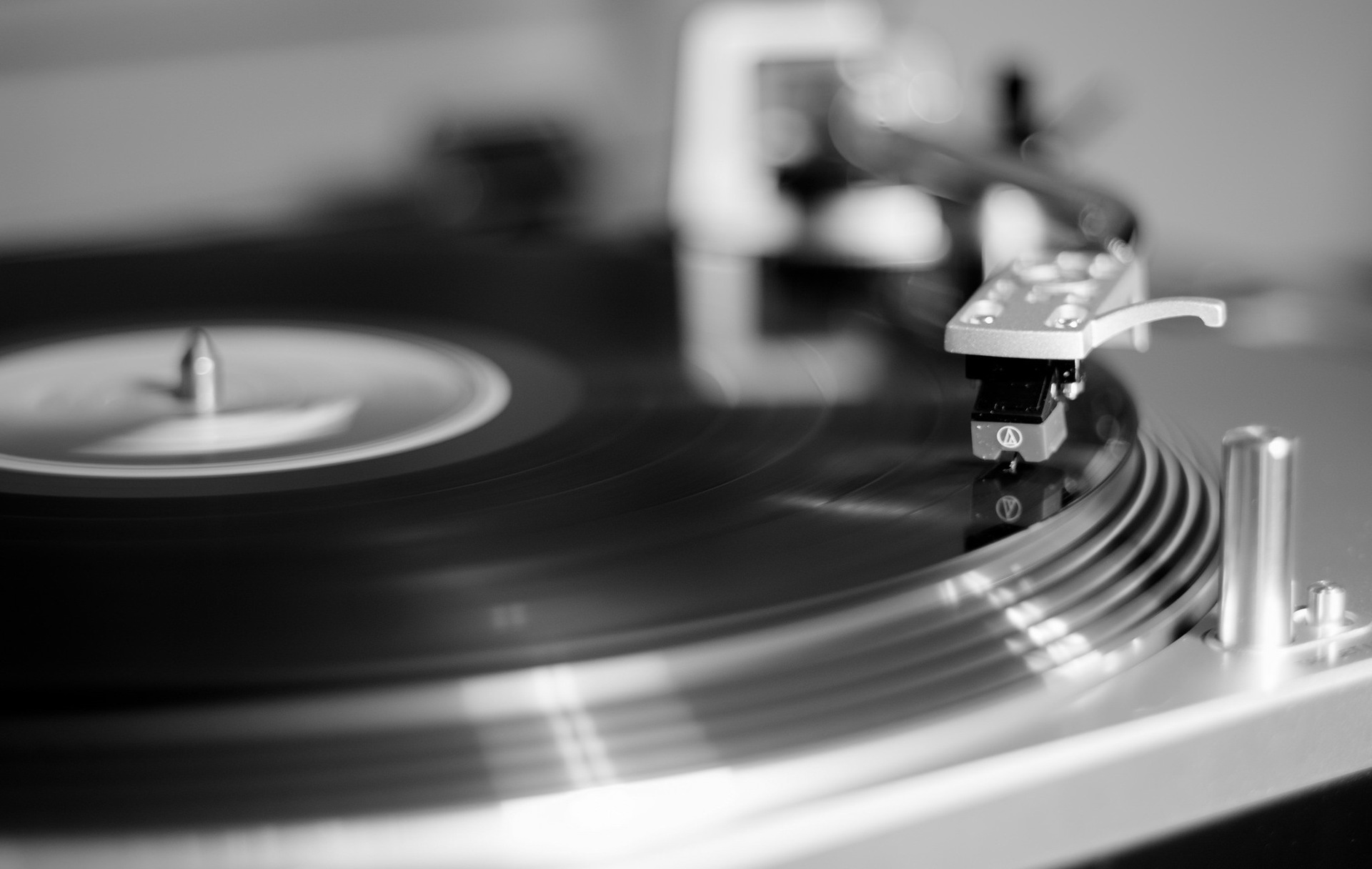
Hook number 4 - sacralization process. According to one of the founders of social anthropology, Emile Durkheim, the only thing that unites the sacred and the ordinary is ritual. When a person takes music seriously and perceives it not as a background for fitness, but as a work of art, he seeks to ritualize the process, as he gives the process of perception of the work great (almost sacred) value. The ease of use of digital formats makes listening easy, but at the same time reduces the process to the level of everyday.
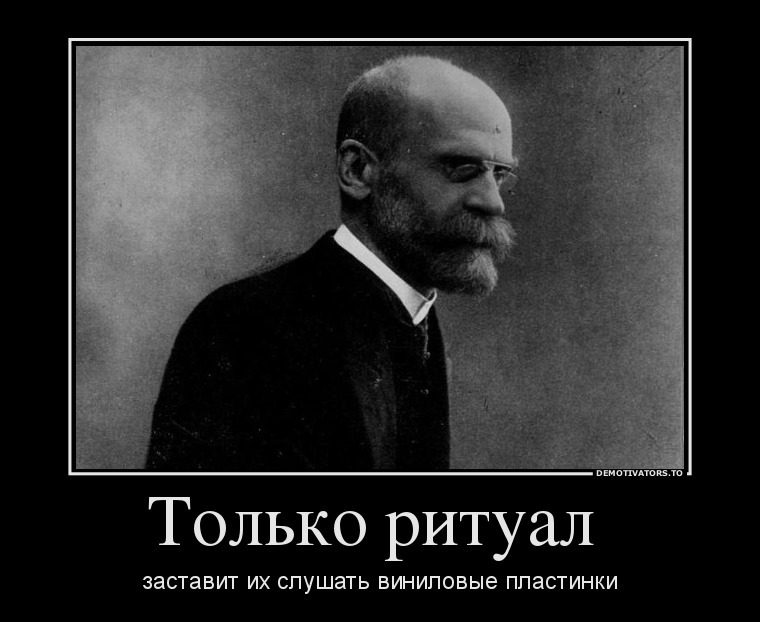
I do not exclude that the people who created the concept of promoting the “great vinyl revolution” relied on the works of the anthropologist. Anyway, I think that the ritualization of the listening process (the essence is the appearance of a sacred action element) is one of the main reasons for modern interest in vinyl (there are other common audio rhythms such as heating cables, amplifiers, etc.).
Automatically, a person begins to look for an alternative to the ordinary and finds vinyl as the best that exists in this regard. A person sees how the music is removed, how the disk is spinning, etc. He gently, like Stekham, in the movie Mechanic-2, wipes the plate, slowly lowers the tonearm with a microlift and he doesn’t give a damn about how much he paid to be able to perform these magical actions, listen to a fat, slightly dirtyish crackling sound with detonation. Not rational - yes, expensive - often, too, but how fascinating.
Implantation in the minds of the masses of opinion about vinyl occurred parallel to the interest in it of certain subcultural groups. Without significant investments, the vinyl fashion would have lived for no more than 3-4 years, but, as we found out earlier, this is useful to many people, respectively, “vinyl has lived, vinyl is alive, vinyl will live”.
As a side effect on the trend, in addition to numerous direct advertising, blog posts and demonstrations at trade shows, we can recall several high-budget films. I will not delve specifically, I will write what immediately comes to mind: the already mentioned "Mechanic", with vinylfil Stekham, and the sequel "Mechanic 2 Revival", "Only Lovers Survive", with a demonstrative audition at the beginning of the film, "Rock Wave" ( The Boat That Rocked), which in principle causes acute episodes of nostalgia for the 60th gone into oblivion.

Episode "Mechanic 2 Revival"
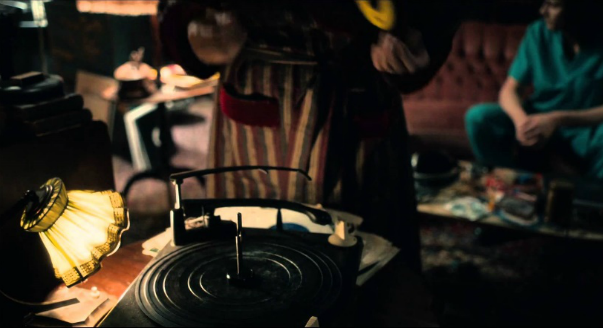
episode "Only Lovers Survive"
Russian directors also contributed to the popularization of vinyl in their homeland. Suffice it to recall "Dead Man's Bluff" (2005), "The Disappeared Empire" (2007), Balabanovsky "Brother" (1997).
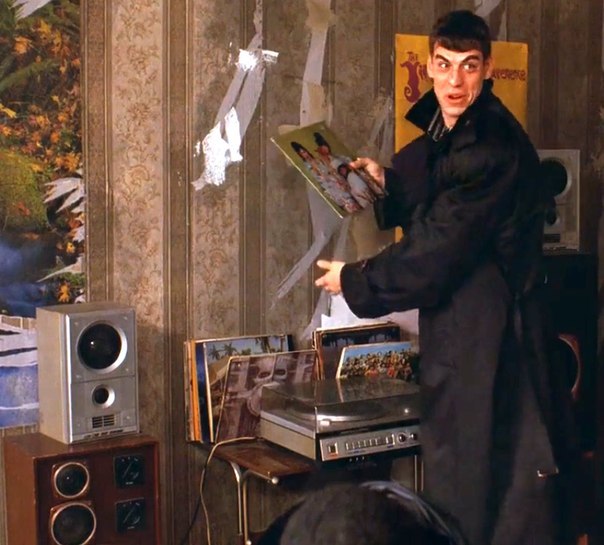
episode "Dead Man's Silence"
It is difficult to say whether these episodes intend to be inserted and vinyl details are savored, but the fact remains that it implicitly influenced the public consciousness. In the case of the “Mechanic” in the first part, the device very much resembles Pro-Ject RPM 9.2 Evolution, which, as it were, hints at jeans.
Make an unequivocal conclusion about the benefits or harms of the phenomenon is difficult. On the one hand, this is a form of social regression, a kind of technical decadence, so to speak. On the other hand, I am the owner of the turntables and no, no, yes, and I will put some kind of crackling disk, for ritual enjoyment of the aria of Vargus from the oratorio, triumphant Judith, Vivaldi, and I don’t care that for convenience I have digitized it long ago.
Another point is the workplaces in the enterprises of manufacturers, as well as any possibility to protect copyrights (although the issue is also controversial and deserves separate discussion).
From a very subjective point of view, the interest in vinyl helped, to some extent, my friend’s publisher, Alexander Valeinsky, to expand the range and now the Civil Defense fans can listen to Letov’s wheezing voice on detonating pieces of black and red vinyl. The last circumstance for me is no less paradoxical than the general return of vinyl to the market.

When the vinyl renaissance ends, it is difficult to predict, but given the interest of the business, the trend will be maintained in the next 3-5 years.
I think it will be correct to inform the readers that we have a wide range of players, which can be found on the link.
I would be glad to have a lively discussion on the place of vinyl equipment and vinyl disks in modern life.

Immediately, I note that my little inner “esthete / music lover / audiophile” always indifferent to vinyl, but not because of its “uniquely wonderful”, “lively”, “inspired” sound, but due to the subjective attachment to fascinating “magic »Electromechanical playback process. I perceive my weakness with due self-irony and in no way impose on anyone.
')
In my early youth, when vinyl had not yet experienced a rebirth, I liked to think that this rare (almost unique) hobby makes me stand out from the gray mass. But quite a bit of time passed, I stopped thinking so much about personal uniqueness, and every second bearded character in rectangular glasses had a player, and an impressive collection of “black gold music lovers”.
Brief history of the death and resurrection of the vinyl phoenix
As many remember, by the end of the 80s - the beginning of the 90s, the format war ended with the complete defeat of vinyl and the temporary tape cassettes taking over the market Olympus, and in the premium segment almost from the moment of their appearance in mountain loneliness CD dominated. Subsequently, digital formats in Europe, the USA, Japan and China, and later in Russia, began to rapidly replace tape cassettes. At the beginning of zero, magnetic tape lived out the last days. Vinyl throughout the 90s - the beginning of the zero occupied only two modest niches: a carrier for DJs and a collectible.

The reasons for the decline of the vinyl era were weight. Records on the records abounded with biting-detonating artifacts, their cost was comparable to a CD, the listening equipment was also not cheap and required appropriate maintenance, and in addition, the records were extremely inconvenient for pirated copying. Last, I think, played a special role in the fate of the format in the post-Soviet expanses. I still remember how in childhood, during games on the street, a record with speeches of L.I. Brezhnev was used as a humane alternative to projectiles, boomerangs, etc., and in the school they used to make flower pots in a straightforward way.

The wide distribution of MP3 and Losles formats, it would seem, should have put an end to many years of controversy, but this was not the case. Suddenly, like a dash from a snuff box, like a bolt from the clear, cloudless sky, an inexplicable interest in vinyl arises. And there is almost no reason, as if from scratch.

From the end of the zero to the beginning of the tenths, several old record-making enterprises are launched at once, the range of manufacturers producing players expands dramatically, the neophyte ranks of the vinyl idol grow like yeast dough. In parallel with these processes, vinyl begins to increasingly appear in Hollywood cinema, there is a huge amount of marketing publications for audiophile-minded audiences with stories about the "liveliness" and "high-spiritedness" of vinyl sound and that, in general, is TRUE.
Reasons: who benefits, nostalgia, the phenomenon of value and marketing for Durkheim
In my opinion, there are several reasons for the “renaissance”. I am not a supporter of conspiracy theories, but it is worth noting that in many ways a wave of interest was rising artificially and with considerable investments. Hence the question: who can invest in the public relations of outdated technology and why.
Beneficiaries
Oddly enough, it is beneficial to almost everyone. Beneficial to record producers, as they were able to revive archaic production. It is profitable for publishers, since they will be able to raise profits at the expense of licensed products, and accordingly, it will be beneficial for music creators, as publishers will have the opportunity to increase royalty. It is beneficial for manufacturers of equipment, since the technology of creating equipment for playing records has been worked out for decades and no astronomical investments in new developments are needed, it is enough to update the design, element base and launch the components into a series. It is beneficial for those who are engaged in advertising and promotion, since the creation of public opinion on a global scale requires an impressive investment.
Consumers vs Marketer
The needs of producers, publishers and performers are one thing, but the consumer will be more difficult to perceive the product without experiencing at least the minimum need for it. I am convinced that there are several psychological “hooks” that marketers catch vinyl neophytes, among them not least occupy: nostalgia, value, aesthetics and ritualization of the process.

Hook number 1 - nostalgia. Many may argue that the “vinyl” audience is often the people who do not remember the era of “players and records” and cannot experience true nostalgia. But it is no secret that it is even easier to form nostalgia for the time in which you did not live. This phenomenon is akin to the popularity of historical reconstruction clubs. Not infrequently, a person, learning something about the past, begins to believe that he was not created for the time in which he lives, and that in the past he could have achieved more. There is something very similar.

Given the lability of beliefs in young people, the formation of nostalgia, for example, by the 60th: the time of the sexual revolution in the USA, the beatlemania and the heyday of the vinyl business, is a realizable task. Some popular subcultures, almost completely borrow them both aesthetics and values of the 60s - 70s, and as a result they are in the focus of vinyl marketing.
Hook number 2 - value. And it is deeper than nostalgic bindings. In my opinion, the availability of musical works, their almost complete free of charge, psychologically reduced the subjective value to the consumer. At the level of sensations, it will be understandable to people who remember the times in which any collection album needed to be searched, waited, reached. The attitude both to the music and to the bearer during the period of comparative deficit was different.

To paraphrase, some people are accustomed to the fact that value is that which is inaccessible, and something available value automatically loses. And yet, it is easier for most people to perceive as something meaningful precisely an object, rather than information. By the way, the situation is changing, but slowly and for the majority the subject is more valuable than information. The return of the vinyl automatically added to the problems so necessary for people attached to the material. You need to buy a turntable, disks, you can, overcoming difficulties, create a collection. Disks can be held in contrast to files whose carrier is a “faceless” USB flash drive or hard disk.
Hook number 3 - aesthetics. The possibilities of the aesthetic, conceptual design of the album in the case of the disc are much higher: large envelopes, printing, booklets, cases in the case of expensive collection editions. It works as a souvenir, but you can also listen. A separate situation with the equipment, it is difficult to imagine audio equipment, so different in design. Any options. Exposure of parts of the mechanism, glass and stone cases, platinum tonearms, plastic, wood, steel, vintage, futurism, high-tech, minimalism, modern, in short everything that pleases the soul and, perhaps, even beyond that.

Hook number 4 - sacralization process. According to one of the founders of social anthropology, Emile Durkheim, the only thing that unites the sacred and the ordinary is ritual. When a person takes music seriously and perceives it not as a background for fitness, but as a work of art, he seeks to ritualize the process, as he gives the process of perception of the work great (almost sacred) value. The ease of use of digital formats makes listening easy, but at the same time reduces the process to the level of everyday.

I do not exclude that the people who created the concept of promoting the “great vinyl revolution” relied on the works of the anthropologist. Anyway, I think that the ritualization of the listening process (the essence is the appearance of a sacred action element) is one of the main reasons for modern interest in vinyl (there are other common audio rhythms such as heating cables, amplifiers, etc.).
Automatically, a person begins to look for an alternative to the ordinary and finds vinyl as the best that exists in this regard. A person sees how the music is removed, how the disk is spinning, etc. He gently, like Stekham, in the movie Mechanic-2, wipes the plate, slowly lowers the tonearm with a microlift and he doesn’t give a damn about how much he paid to be able to perform these magical actions, listen to a fat, slightly dirtyish crackling sound with detonation. Not rational - yes, expensive - often, too, but how fascinating.
Vinylophilia in movies
Implantation in the minds of the masses of opinion about vinyl occurred parallel to the interest in it of certain subcultural groups. Without significant investments, the vinyl fashion would have lived for no more than 3-4 years, but, as we found out earlier, this is useful to many people, respectively, “vinyl has lived, vinyl is alive, vinyl will live”.
As a side effect on the trend, in addition to numerous direct advertising, blog posts and demonstrations at trade shows, we can recall several high-budget films. I will not delve specifically, I will write what immediately comes to mind: the already mentioned "Mechanic", with vinylfil Stekham, and the sequel "Mechanic 2 Revival", "Only Lovers Survive", with a demonstrative audition at the beginning of the film, "Rock Wave" ( The Boat That Rocked), which in principle causes acute episodes of nostalgia for the 60th gone into oblivion.

Episode "Mechanic 2 Revival"

episode "Only Lovers Survive"
Russian directors also contributed to the popularization of vinyl in their homeland. Suffice it to recall "Dead Man's Bluff" (2005), "The Disappeared Empire" (2007), Balabanovsky "Brother" (1997).

episode "Dead Man's Silence"
It is difficult to say whether these episodes intend to be inserted and vinyl details are savored, but the fact remains that it implicitly influenced the public consciousness. In the case of the “Mechanic” in the first part, the device very much resembles Pro-Ject RPM 9.2 Evolution, which, as it were, hints at jeans.
Conclusion
Make an unequivocal conclusion about the benefits or harms of the phenomenon is difficult. On the one hand, this is a form of social regression, a kind of technical decadence, so to speak. On the other hand, I am the owner of the turntables and no, no, yes, and I will put some kind of crackling disk, for ritual enjoyment of the aria of Vargus from the oratorio, triumphant Judith, Vivaldi, and I don’t care that for convenience I have digitized it long ago.
Another point is the workplaces in the enterprises of manufacturers, as well as any possibility to protect copyrights (although the issue is also controversial and deserves separate discussion).
From a very subjective point of view, the interest in vinyl helped, to some extent, my friend’s publisher, Alexander Valeinsky, to expand the range and now the Civil Defense fans can listen to Letov’s wheezing voice on detonating pieces of black and red vinyl. The last circumstance for me is no less paradoxical than the general return of vinyl to the market.

When the vinyl renaissance ends, it is difficult to predict, but given the interest of the business, the trend will be maintained in the next 3-5 years.
I think it will be correct to inform the readers that we have a wide range of players, which can be found on the link.
I would be glad to have a lively discussion on the place of vinyl equipment and vinyl disks in modern life.
Source: https://habr.com/ru/post/403367/
All Articles